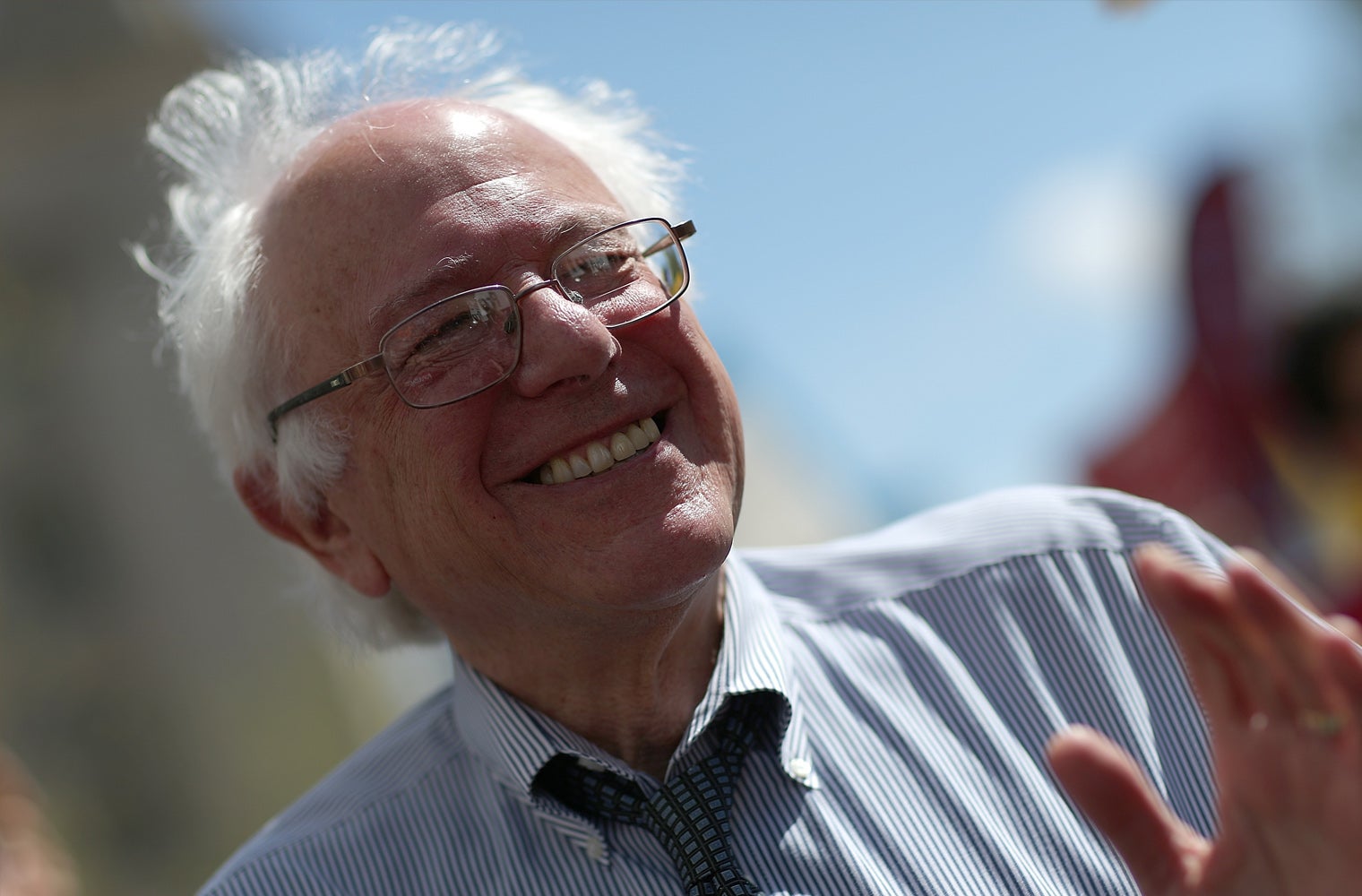Bernie Sanders has the right approach to health care say 2,000 doctors
The doctors argue that a progressive tax, aimed at reducing income inequality would be an attractive way to fund the system

Your support helps us to tell the story
From reproductive rights to climate change to Big Tech, The Independent is on the ground when the story is developing. Whether it's investigating the financials of Elon Musk's pro-Trump PAC or producing our latest documentary, 'The A Word', which shines a light on the American women fighting for reproductive rights, we know how important it is to parse out the facts from the messaging.
At such a critical moment in US history, we need reporters on the ground. Your donation allows us to keep sending journalists to speak to both sides of the story.
The Independent is trusted by Americans across the entire political spectrum. And unlike many other quality news outlets, we choose not to lock Americans out of our reporting and analysis with paywalls. We believe quality journalism should be available to everyone, paid for by those who can afford it.
Your support makes all the difference.More than 2,000 physicians announced their support Thursday for a single-payer national health care system, unveiling a proposal drafted by doctors that appears to resonate with Bernie Sanders' call for "Medicare for All."
In an editorial and paper published in the American Journal of Public Health on Thursday, the doctors call out the "persistent shortcomings of the current health care system." They warn about the risks of continuing along the path laid out by the Affordable Care Act: "down this road, millions of Americans remain uninsured, underinsurance grows, costs rise, and inefficiency and the search for profits are abetted."
The future of health reform has been widely discussed in the presidential campaign, and for years health reform has sparked a raging and divisive political debate among politicians. The proposal, however, is endorsed by hundreds of physicians who have an inside view of the effects of the law on patients and medical care. It grew out of discussions in late 2014, when a small group of physicians began to assess the effects of health reform and found it coming up short.
"Those discussions led us to feel that we needed to put out in public, first of all, a clear statement that problems haven’t been solved," said David Himmelstein, an internist who practices in the South Bronx and a professor at the City University of New York School of Public Health at Hunter College.
Himmelstein and his colleagues call the right to medical care "a dream deferred," despite health reform.
About 12.7 million people are insured through the state and federal marketplaces created by the law, according to data released in February. But the Congressional Budget Office has estimated that about 28 million people will be uninsured in 2026.
On top of that, Himmelstein said he began to notice insured patients having more trouble paying for and accessing care, as their plans have been designed with narrower networks of physicians and growing deductibles -- issues that Himmelstein argues are ripple effects of the law. That's because the insurance policies sold through the marketplaces cover less than traditional employer plans did previously, "and we're seeing employers race to the bottom, once the Affordable Care Act says that's what coverage consists of," Himmelstein said.
Jeffrey Flier, the dean of Harvard Medical School, said the proposal is "massively backward," adding that the one thing it points out correctly is that health reform has been unable to deliver on its promise of affordable health care.
"I don't think it's a very meaningful contribution," Flier said. "It conjures up five-year planning by Stalinists."
The new single-payer proposal doesn't get into many specifics of how it would be funded, other than to estimate that the increase in government health care spending would be balanced by shrinking administrative costs and reductions in the cost of health care services and drugs. The doctors argue that a progressive tax, aimed at reducing income inequality would be an attractive way to fund the system.
"Frankly, there's so much fat in the U.S. health care system -- we're wasting so much money -- that we can afford to give everyone in this country everything that we know is useful without restriction," Himmelstein said.
Kenneth Thorpe, a professor of health policy at Emory University who has been critical of the feasibility and expense of Sanders' single-payer plan, said that the new proposal would cost more than the status quo. It overestimates the administrative savings that would be possible from a single-payer system, Thorpe argues.
"You can’t do what they’re talking about doing with the same amount of money that we’re currently spending," Thorpe said.
He said in addition to a switch to single-payer being disruptive, it's likely to be politically unpalatable. Thorpe's analysis has found that 71 percent of people with private insurance would pay more in a single-payer system than they currently do because taxes would outpace savings from premiums and other health care costs.
However, he noted that many of the ideas embedded in the proposal -- such as new payment models -- are already being experimented with today, under the current system.
Himmelstein said that today, hospitals must collect their operating budget "Band-Aid by Band-Aid and aspirin tablet by aspirin tablet, fighting with hundreds of different insurance plans." The physicians propose funding hospitals with a lump sum to cover all operating expenses, bypassing the large billing departments that today accrue hospital income piecemeal. But Thorpe pointed out similar ideas are already being tested in Maryland hospitals.
"We don’t need to completely blow the system up and disrupt it to generate the savings," Thorpe said.
Copyright Washington Post
Join our commenting forum
Join thought-provoking conversations, follow other Independent readers and see their replies
Comments